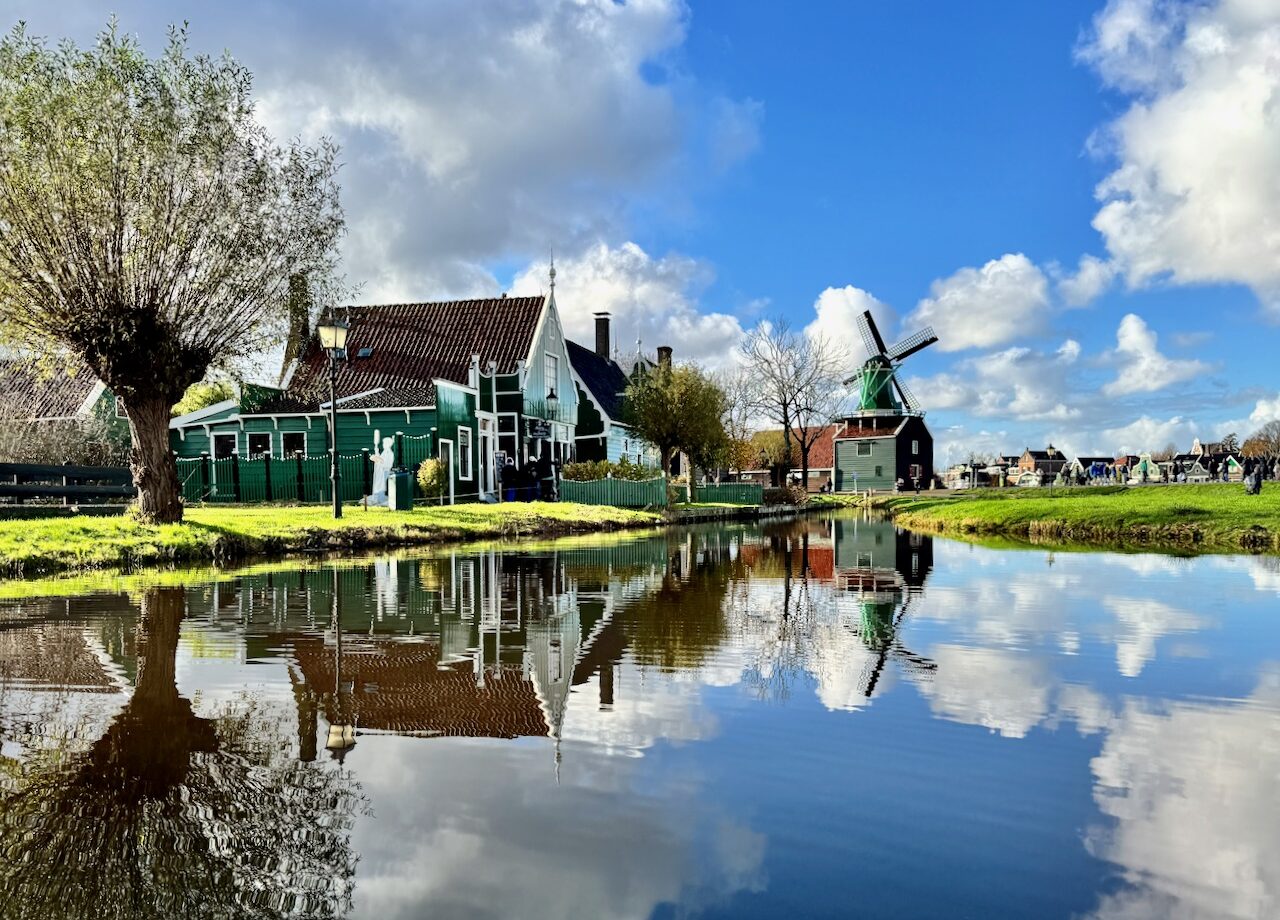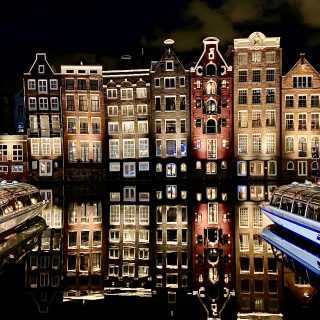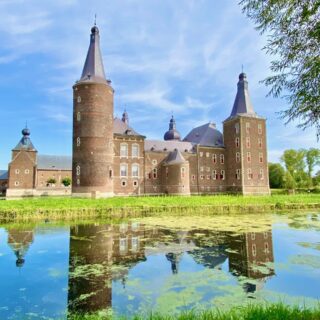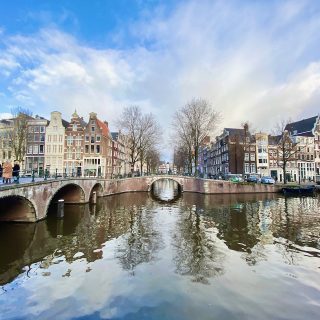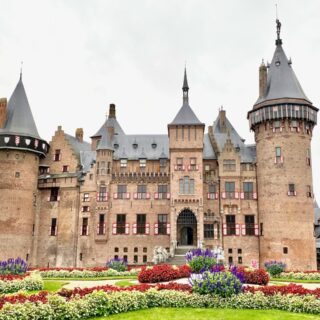Zaanse Schans is a picture perfect open-air museum in the countryside near Amsterdam (map). Whenever I have friends or family visiting me for the first time, Zaanse Schans is always one of the first places I take them to. With its windmills, traditional wooden houses, workshops, museums and picturesque riverside setting, Zaanse Schans is a great place to get a first taste of Dutch heritage and history. And… it’s so pretty! There are numerous things to see and do in Zaanse Schans. Visitors can walk freely around the village and visit some of the windmills, artisanal workshops and museums (some of the attractions charge a small entry fee). On a recent visit, I spent more time in the Zaans Museum and learned a lot about the history and industrial significance of the Zaan region in 18th century Europe.
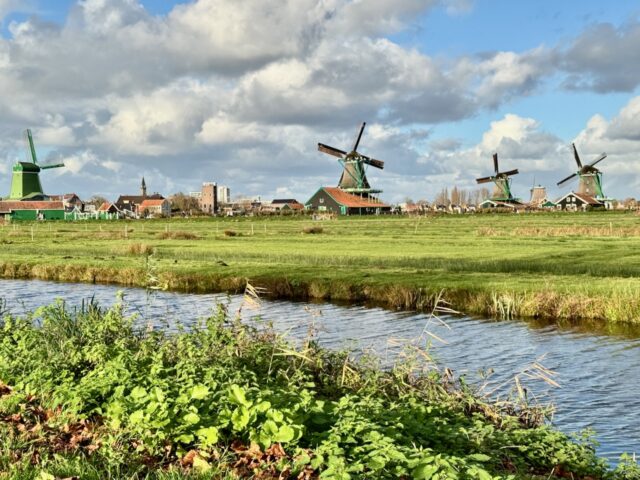
The creation of Zaanse Schans
Zaanse Schans was established in the 1960’s as a preservation project. Its purpose was to save and showcase historic buildings from the surrounding Zaan region. Many of the structures were carefully relocated to this area to protect them from demolition. Originally planned for housing purposes, the village became an instant hit with tourists. In the 1970’s, the village was expanded to include facilities for tourists. Today, Zaanse Schans is a living museum, showcasing the architectural and cultural legacy of North Holland.
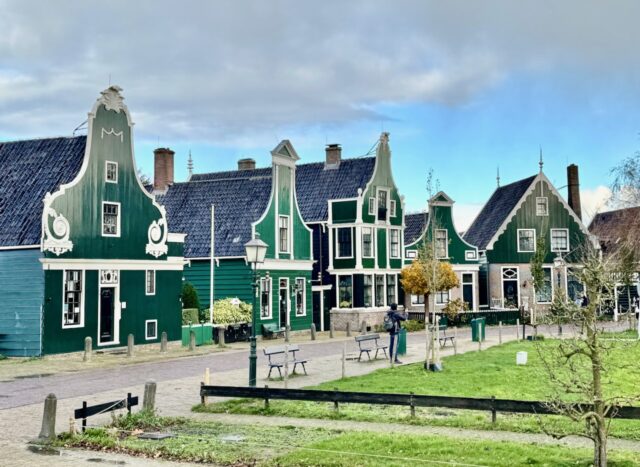
Zaanse Schans is more than just a tourist attraction. For me, it’s a wonderful tribute to Dutch ingenuity and resilience. The extensive use of windmills symbolise the resourcefulness of the Dutch, who harnessed nature to power their industries. It’s also a showcase of how the locals, driven by innovation, continuously reinvented their industries to cater to the demands of different periods of time.
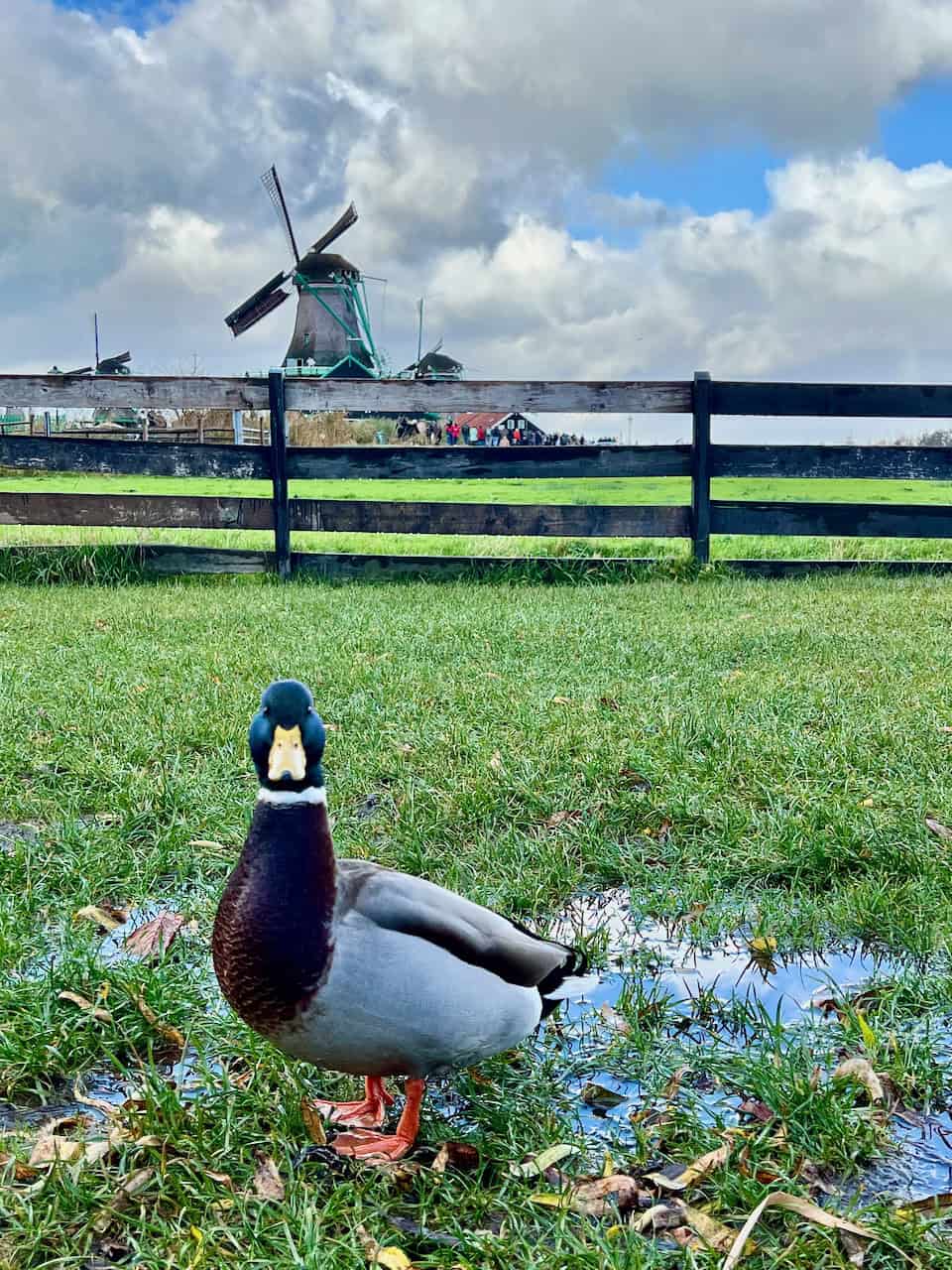
Zaan region – the industrial powerhouse of Europe
In the 17th – 19th centuries, the Zaan region was the most important industrial area in Europe. The region was historically significant due to its innovative use of wind power. At its peak, over 600 windmills operated here, powering sawmills, oil presses, and other industries such as shipbuilding. This made the region one of the first industrialised areas in the world (powered by clean energy!), laying the groundwork for modern manufacturing processes.
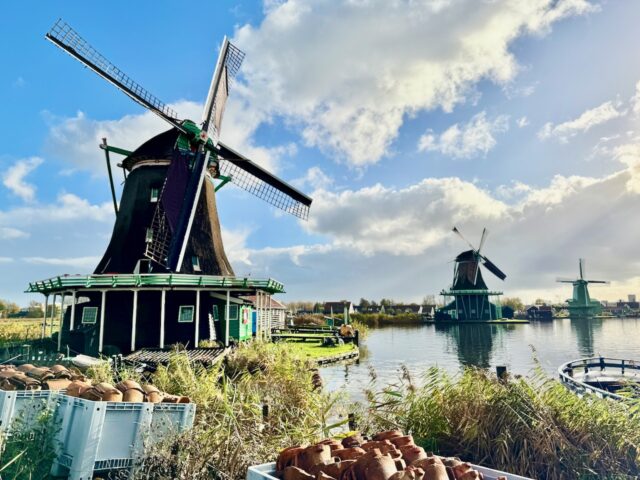
In the late-19th century, the windmills made way for steam-powered machines. During this time, the region was known for its cocoa and rice processing industries. Zaan industries continued to boom after the completion of the North Sea Canal in 1876, that connected Amsterdam and the Zaan region with the North Sea. In the first half of the 20th century, the region became known as the ‘larder of the Netherlands‘ due to its extensive food production industries. Various Dutch food brands such as Verkade (chocolates and biscuits) and Lassie (rice), as well as the largest Dutch supermarket chain, Albert Heijn, have their roots in the Zaan region.
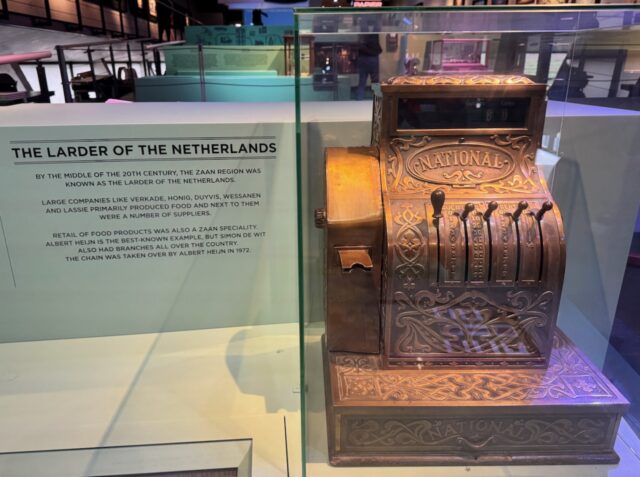
What to see and do at Zaanse Schans
Visitors to Zaanse Schans will find many attractions and activities that bring Dutch history and craftsmanship to life. Here are things to see and do in Zaanse Schans:
1. Explore the windmills
Zaanse Schans is home to several fully operational windmills, each with a unique purpose. Some grind spices, others produce paint, and one even presses oil. Popular windmills to visit include:
- De Kat: a windmill that produces pigments for paint
- De Zoeker: used for extracting oil
- Het Jonge Schaap: a sawmill showcasing traditional woodworking techniques.
Many of these windmills are open to the public, and you can climb inside to see the intricate mechanisms at work.
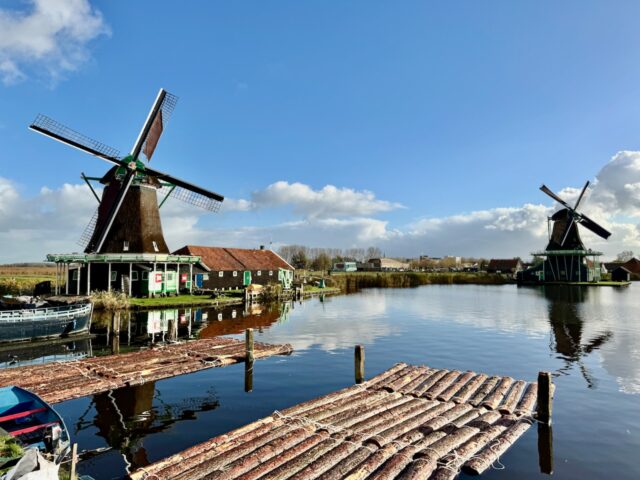
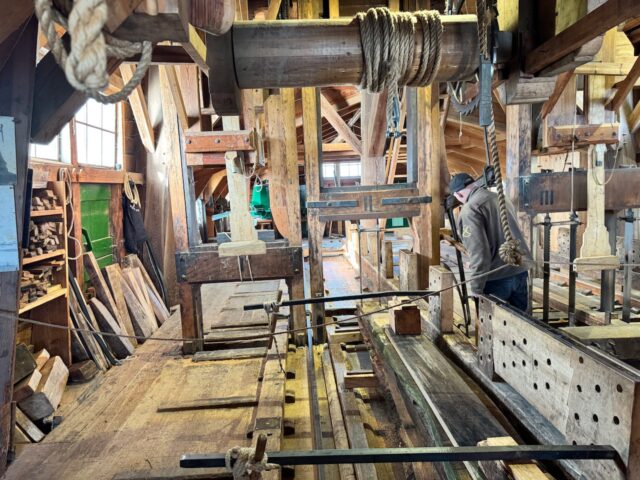
2. Discover traditional crafts and workshops
Various houses were converted into workshops and and exhibition areas. Visitors can learn about numerous traditional Dutch crafts such as weaving, clog- and cheese-making. There’s even a tinsmith where one can learn about 18th century tinware.
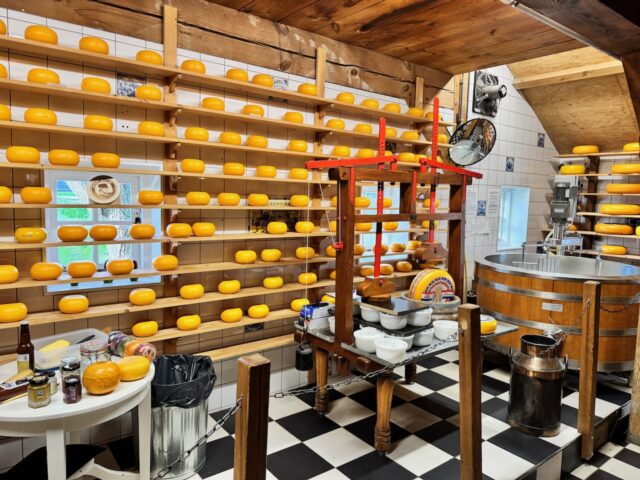
3. Visit historical houses and museums
The village is dotted with well-preserved wooden houses painted in the iconic green and white hues of the Zaan region. Some now serve as museums, including Museum Zaanse Tijd (Clock Museum) and Museumwinkel Albert Heijn (reconstruction of the first Albert Heijn grocery store from 1887, now an iconic Dutch supermarket chain).
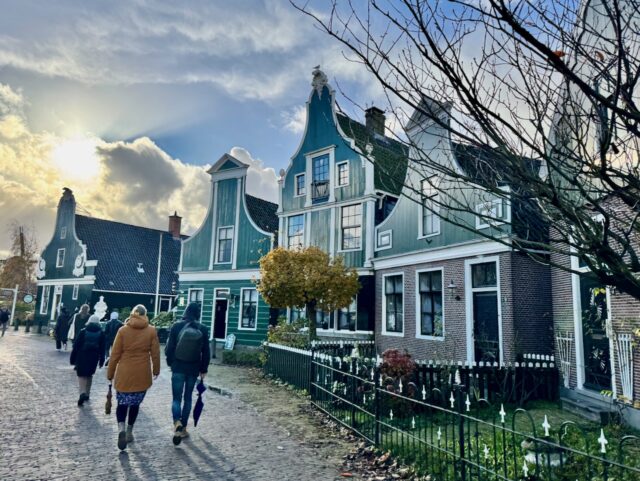
The Zaans Museum, located in a newly-built complex, is well worth a visit. It offers a broader historical context of the region, with exhibits on industrial innovations and traditional costumes.
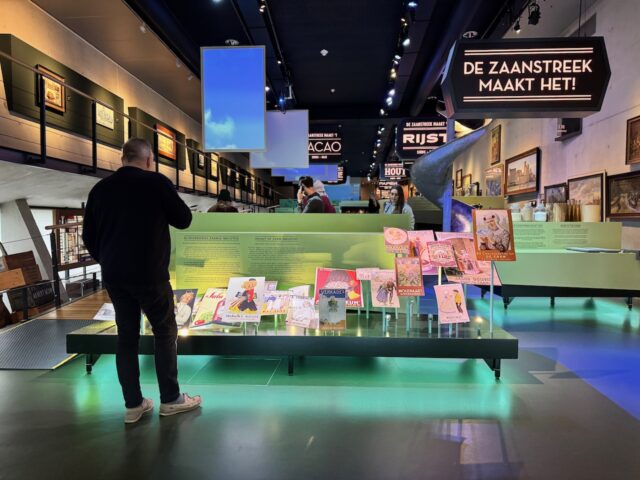
4. Scenic walks and boat rides
Stroll along the Zaan River to enjoy stunning views of the windmills, riverside houses in Zaan style and the countryside. Alternatively, visitors can opt to join a boat tour for a unique perspective on the area’s waterways and historic buildings.
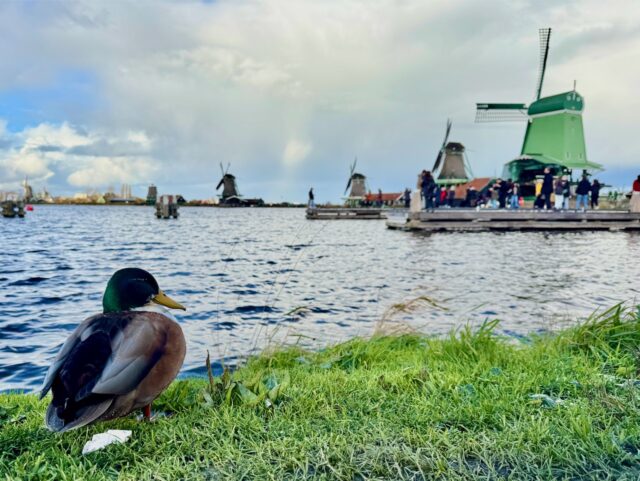
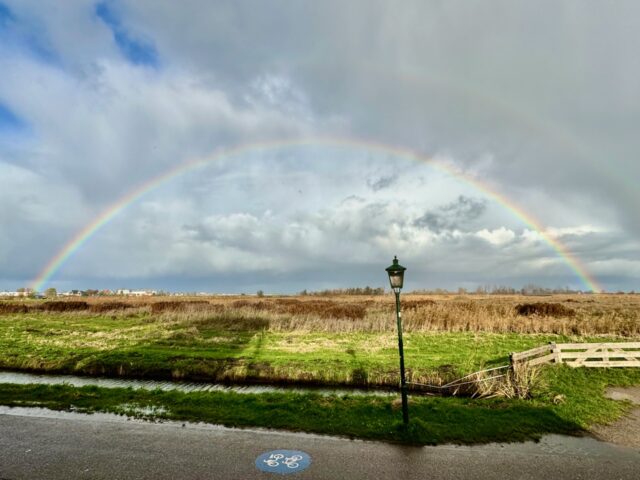
Whether you’re admiring the spinning blades of a windmill, savouring a piece of freshly made cheese, or walking along the cobblestone paths of this historic village, Zaanse Schans promises a fascinating dive into Dutch heritage. It’s a must-visit for anyone eager to explore the Netherlands’ traditions, artistry and innovation.
Planning your visit
Zaanse Schans is located about 20 minutes by train or car from Amsterdam, making it an easy day trip. Most attractions are open from 9am to 5pm. It’s a popular tourist attraction so I recommend going in the mornings or late-afternoons. The best times of the year to visit Zaanse Schans are in spring and summer as they offer the most vibrant views, with lush greenery and tulip blooms. Autumn and winter provide a quieter, more intimate experience.
For the best, most informative experience, I suggest joining a small group tour.
While walking through the village is free, some attractions, like the windmills and museums, charge a small admission fee. Purchase the Zaanse Schans ticket for entry to all attractions and museums.
Visiting by train
The Zaandijk/Zaanse Schans train station is located about a 20-minute walk away. It’s a lovely walk that passes a cocoa processing plant (you’ll get to enjoy the scent of cocoa along the way), a windmill and a bridge that offers beautiful views of the Zaan River.
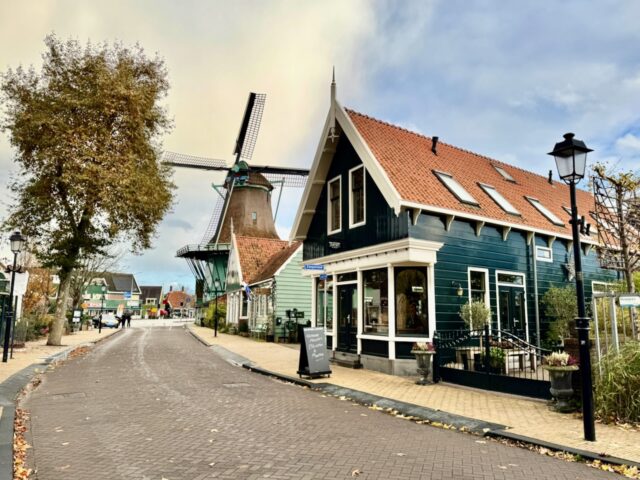
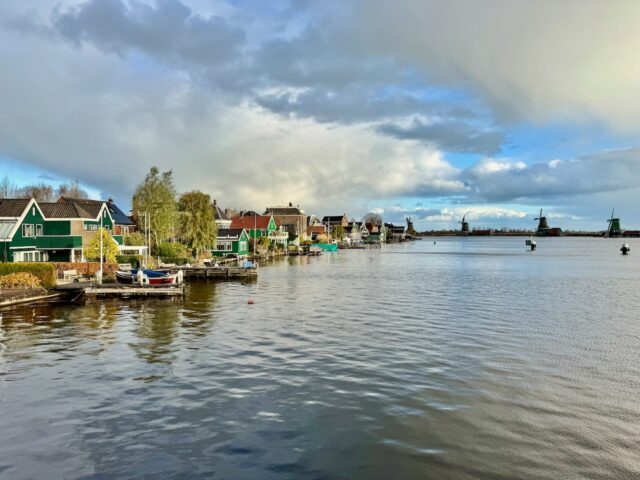
I also suggest exploring the Langedijk street in the village of Zaandijk. In this street, you’ll find gorgeous houses in the Zaan architectural style.
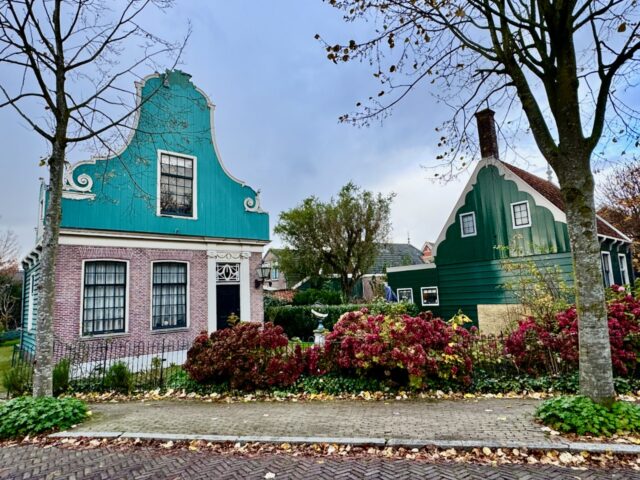
Read more about things to do in Amsterdam and other places to visit near Amsterdam:

